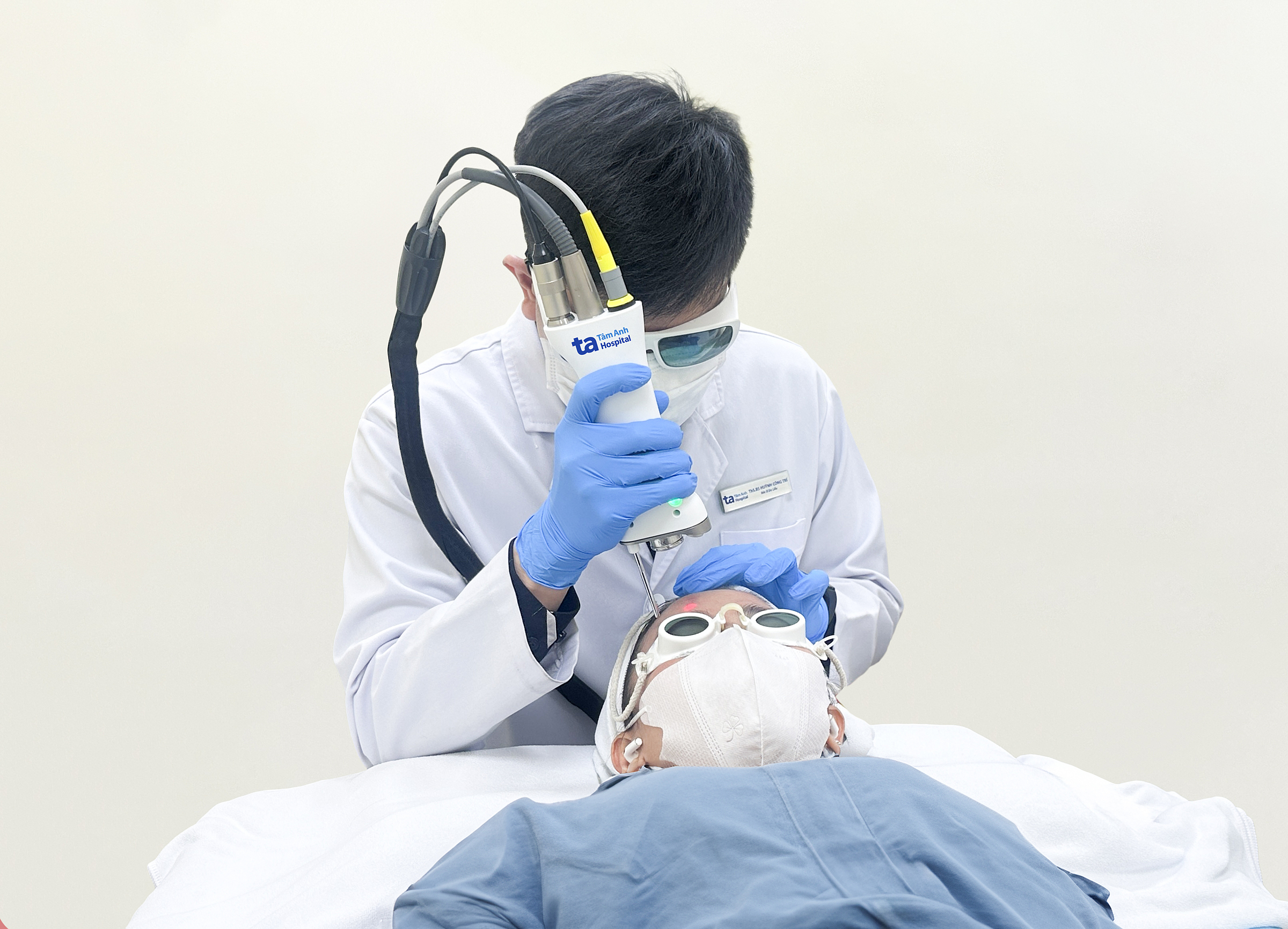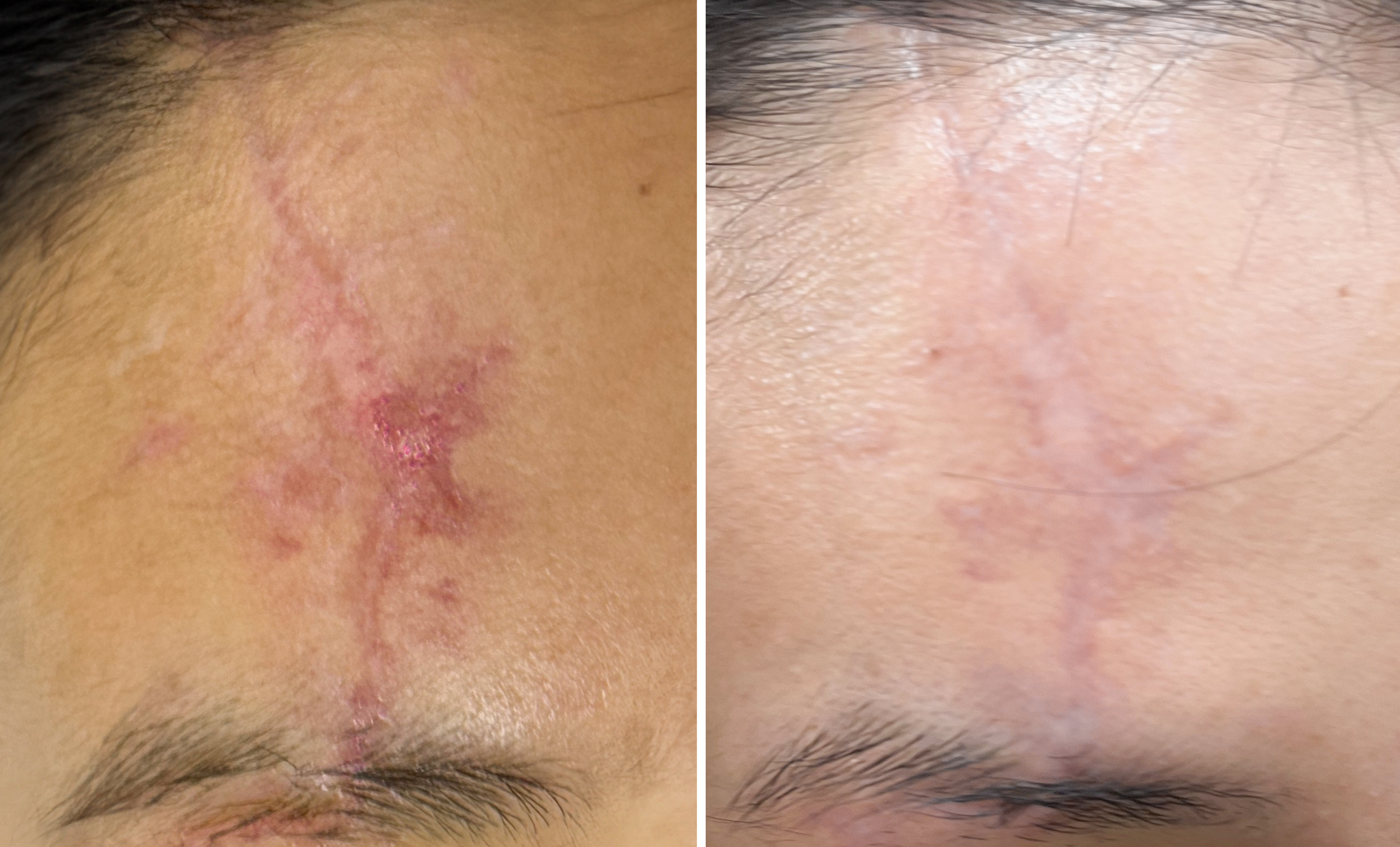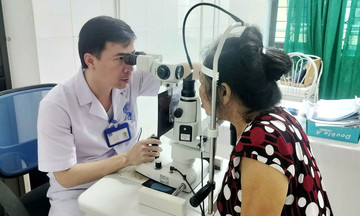Dr. Vu Thi Thuy Trang, a dermatologist at Tam Anh General Hospital in Ho Chi Minh City, described Minh's scar as mildly hypertrophic and slightly discolored. Due to frequent facial expressions and sun exposure, forehead scars can darken and harden, affecting appearance.
Minh's treatment began 4 months after her accident, during the skin's regenerative phase, which facilitated scar reduction and skin recovery.
 |
A doctor uses a 4D laser to treat the long scar on Minh's forehead. Photo: Hospital provided |
A doctor uses a 4D laser to treat the long scar on Minh's forehead. Photo: Hospital provided
Dr. Trang used a Fotona 4D laser with three specialized handpieces. One addressed discoloration, the second stimulated collagen production, and the third promoted tissue regeneration through micro-thermal points.
The treatment consisted of 3 to 10 sessions, spaced one month apart.
After two sessions, Minh's scar showed significant improvement. The skin became smoother, the scar flattened, and the discoloration faded. The surrounding skin also evened out, no longer red or bumpy.
Following each session, Minh was advised to avoid sun exposure to prevent post-inflammatory hyperpigmentation and to refrain from using harsh chemicals to avoid skin irritation.
 |
Minh's scar significantly faded after two 4D laser treatments. Photo: Tam Anh General Hospital |
Minh's scar significantly faded after two 4D laser treatments. Photo: Tam Anh General Hospital
According to Dr. Trang, improper wound care after suture removal can lead to raised scars, especially if the wound is deep enough to reach the dermis or hypodermis where collagen is produced. Uncontrolled tissue regeneration can result in excess collagen, forming raised scars. Areas like the forehead, shoulders, and chest are prone to tension during movement, hindering healing and promoting abnormal fibrous tissue growth.
Early and appropriate scar treatment prevents hypertrophic or unsightly scars. For facial wounds, especially deep lacerations, cosmetic treatment can begin 1 to 2 weeks after suture removal, once new skin tissue has formed and there are no signs of infection.
In addition to the Fotona 4D laser, Tam Anh General Hospital utilizes other technologies like fractional erbium laser, fractional CO₂ laser, and RF microneedling for scar treatment. Depending on the location and condition of the wound, doctors create personalized treatment plans to optimize results, minimize invasiveness, and promote faster recovery.
Minh Huong
*The patient's name has been changed.
| Readers can submit questions about dermatology and cosmetic dermatology here for doctors to answer. |












